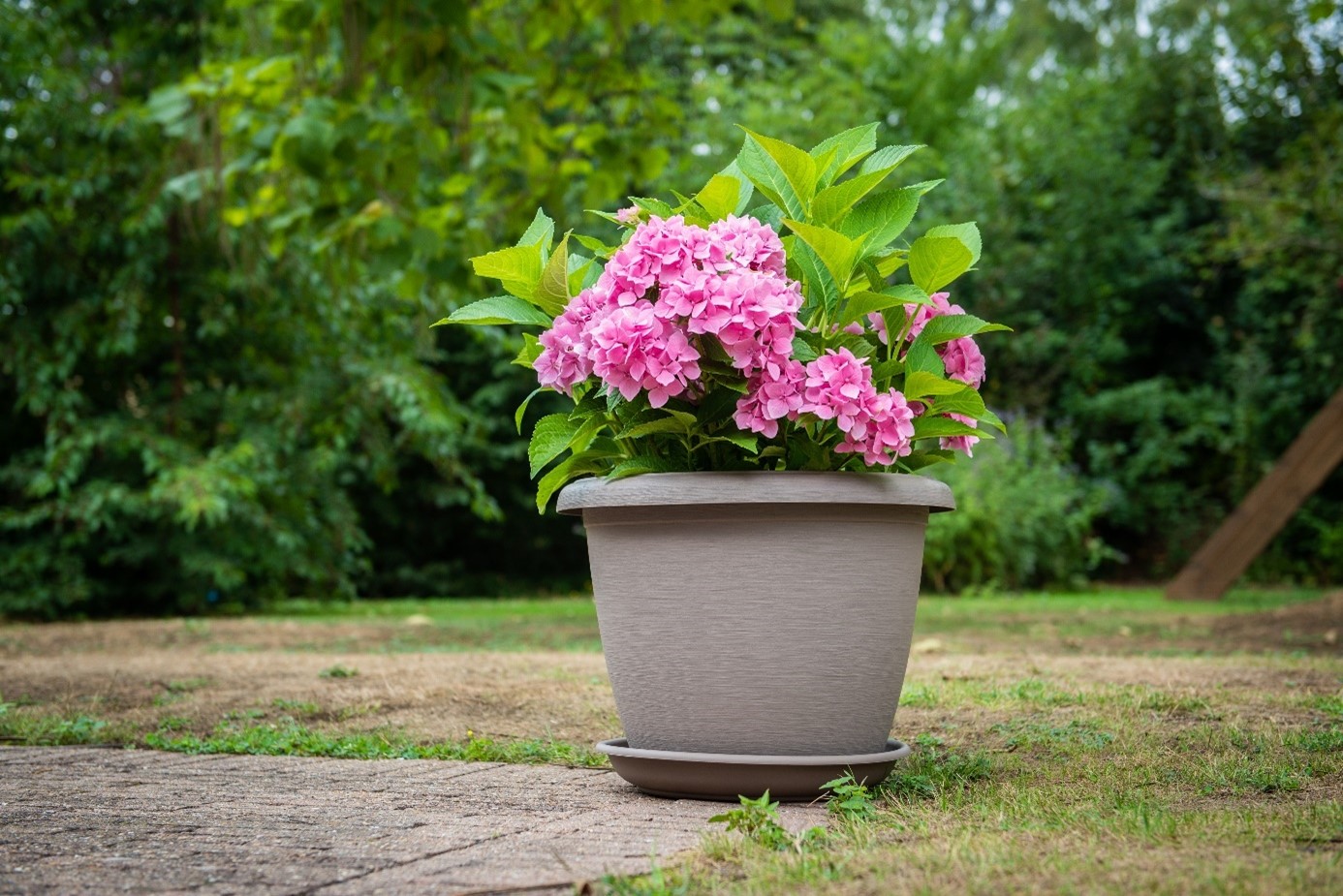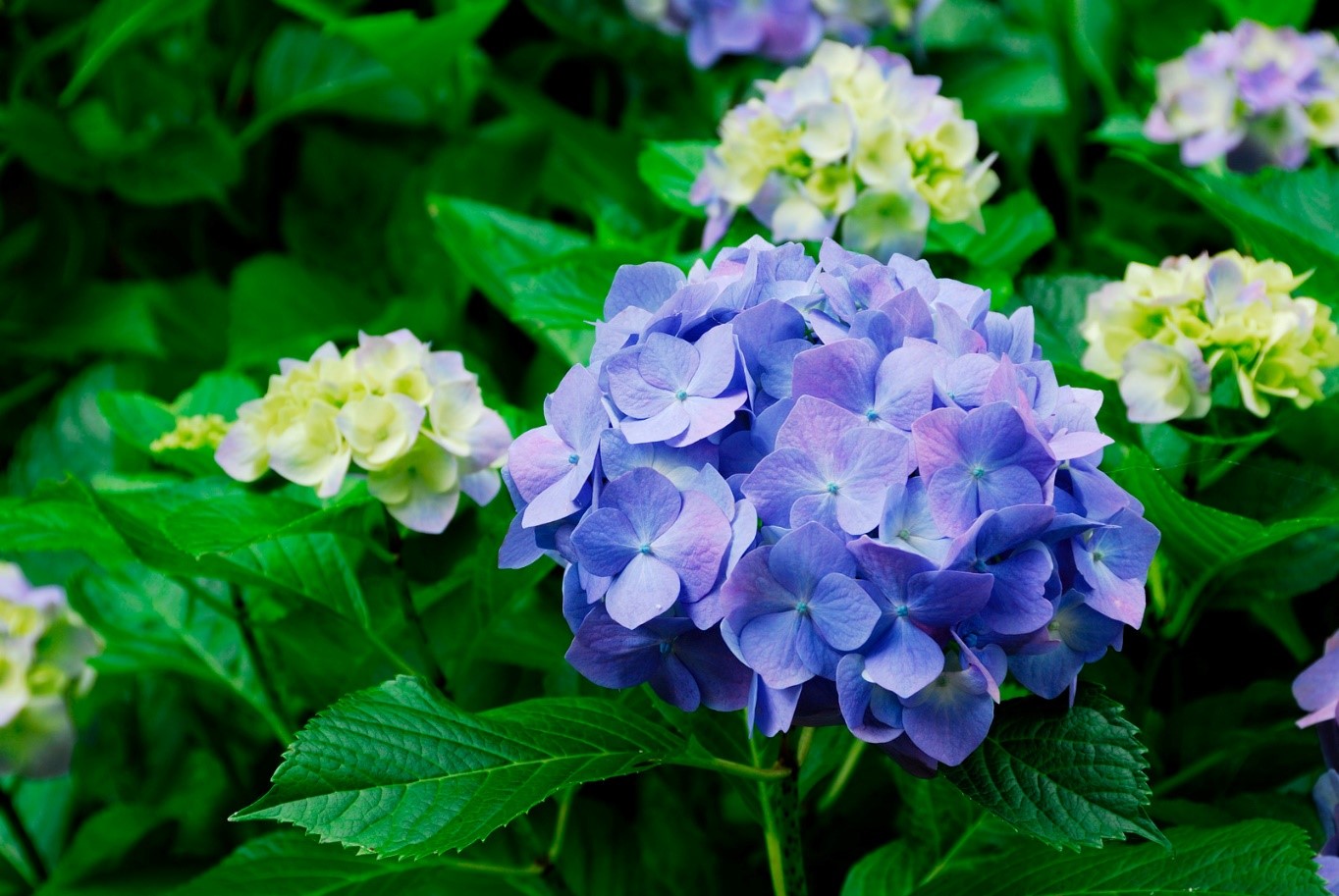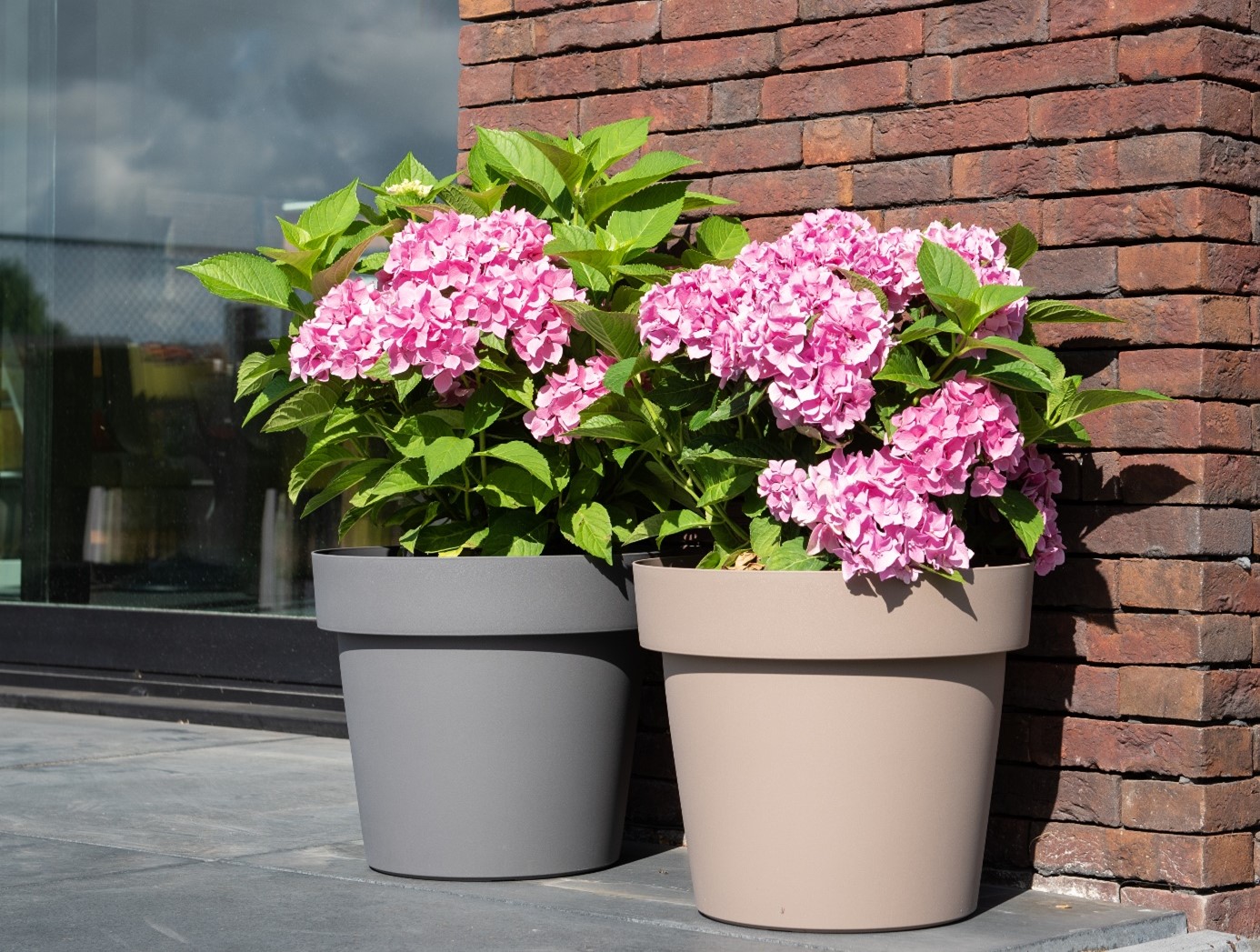Growing hydrangeas in pots is a great option if you're short on space. They'll add a colorful, cheerful touch to a terrace or balcony that gets enough sun.

Hydrangea origin
The botanical name hydrangea first appeared in 1739. Cultivated and appreciated for centuries by generations of gardeners, the hydrangea as we know it originated in Japan and was introduced to Europe at the end of the 18th century.
Although we're mainly familiar with the horticultural cultivars of the hydrangea macrophyla species, there is in fact a wide variety of hydrangea: of different sizes and shapes, from dwarf varieties to taller, arborescent forms. There are four distinct flower forms: lacecap, panicle, mophead and snowball. Some species flower on old wood, others on new wood, and some varieties flower on both.
Hydrangea pruning
Size at maturity varies according to variety. Some are no more than 1 m high and wide, while others can reach 4 m high and 3 m wide.
Color of hydrangea
Most bloom in shades of blue, violet or pink, but there are also white, green and even some red varieties. Many hydrangeas change color as they age.
 On the other hand, the flower color of some hydrangeas (mainly large-leaved varieties or mountain hydrangeas) can change according to the composition and pH of the soil. The same hydrangea may be blue on very acidic soil and turn pink if grown on alkaline soil.
On the other hand, the flower color of some hydrangeas (mainly large-leaved varieties or mountain hydrangeas) can change according to the composition and pH of the soil. The same hydrangea may be blue on very acidic soil and turn pink if grown on alkaline soil.


Hydrangea varieties
There are six main types of hydrangea:
- Large-leaved or classic hydrangea (Hydrangea macrophylla) - two types of inflorescence: ball-shaped or flat-headed
- Mountain hydrangea (Hydrangea serrata) - month sensitive to late frosts
- Hydrangea paniculata - Very easy to grow. conical flower stems.
- Oakleaf hydrangea (Hydrangea quercifolia) - Remains decorative all year round. Flamboyant colors in autumn.
- Climbing hydrangea (Hydrangea petiolaris) - Climbing form, ideal for shade.
- Hydrangea arborescens - A classic, very easy to grow. Blooms on wood all year round.

Which pot for my hydrangea?
Although hydrangeas often conjure up images of splendid seaside garden beds, some varieties do very well in pots, with a minimum of care and attention. And their blooms are just as generous and colorful.
Pot size
The first step is to choose the right container. Hydrangeas don't do well in containers that are too small, as their roots grow quickly. What's more, small containers dry out too quickly. We therefore recommend a pot at least 40 to 60 cm in diameter and deep.


Drainage
Make sure there are drainage holes at the bottom. Roots will rot if the soil is not sufficiently drained. Add a layer of clay balls, covered with plant film, to the bottom of the pot to facilitate drainage. Good drainage is the most critical step for healthy plants.
Potting soil
Buy good-quality potting soil. Mix in a slow-release fertilizer. Leave at least 5cm between the top of the potting soil and the edge of the pot, so that you can water without the water overflowing. Pack the soil around the plant to remove air pockets and hold it firmly in the pot.
How to care for a potted hydrangea?
Hydrangeas need 3 essential things to thrive: well-drained soil, plenty of sunshine and humidity.
☀ Light
Most hydrangeas prefer morning sun and afternoon shade. Outdoors, place your hydrangea in semi-shade, sheltered from the wind. Indoors, choose a bright, cool spot. Note that some varieties may have other requirements. Be sure to check the specifics of the variety you choose. Be careful, too much sun can burn the flowers.
❀ Flowering
Hydrangeas have a particularly long and rewarding flowering period: 5 months. They usually bloom in summer, but some bloom earlier in the season and others later (and if you're lucky, maybe even in autumn).
It's best to wait until after flowering, in autumn, before repotting your hydrangea in a larger pot.
Hydrangeas bought in containers should be planted outdoors in spring or autumn. Make sure there's no risk of frost when planting hydrangeas outdoors.

💧 Watering, fertilizing and maintenance
Watering twice a week is generally recommended. But it all depends on the size of the pot and plant, and the weather conditions if the plant is outside. Observe your plant: if the leaves are hanging, your hydrangea is thirsty. In this case, water without delay...
Use a slow-release generic fertilizer in early spring. A single annual application is sufficient. Too much fertilizer encourages rapid growth with few flowers.
Cut back the flowers after blooming to encourage continued flowering and maintain the plant's overall appearance. Finally, hydrangeas need a cold spell to bloom again. If it remains in the garden, protect it in winter with a winter cover and from cold winds.

🗑 Potting
To keep a pot plant healthy, it's a good idea to repot it to give it the space it needs to grow, especially in the case of larger plants such as hydrangeas. All varieties should be repotted every year or two, and will give you signs when repotting becomes necessary.
Follow the usual instructions for repotting potted plants:
- Soak the root ball in water at room temperature;
- Carefully aerate the roots, then place the hydrangea in a larger pot;
- Fill the pot with a layer of clay ball, plant film and potting soil, leaving a few centimetres to the edge of the pot;
- Tamp the soil, add slow-release fertilizer and water.

Browse the collection